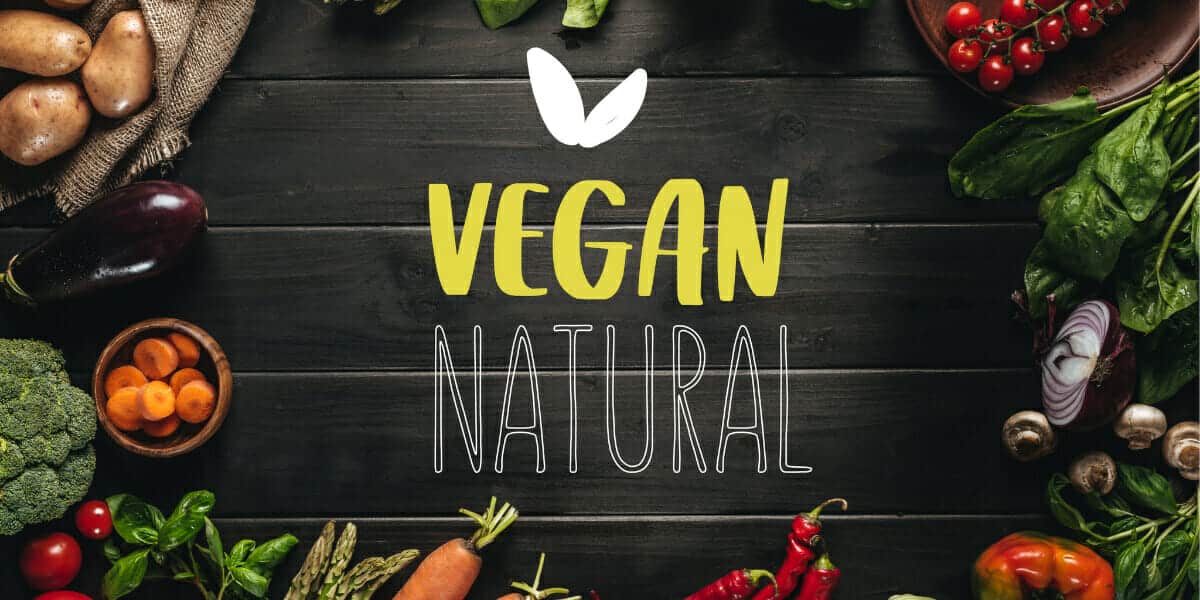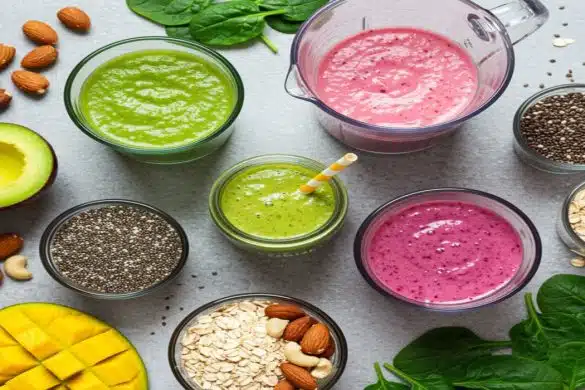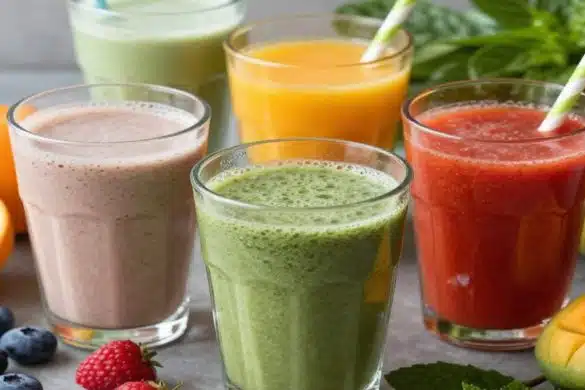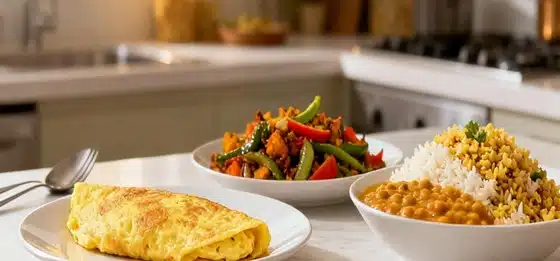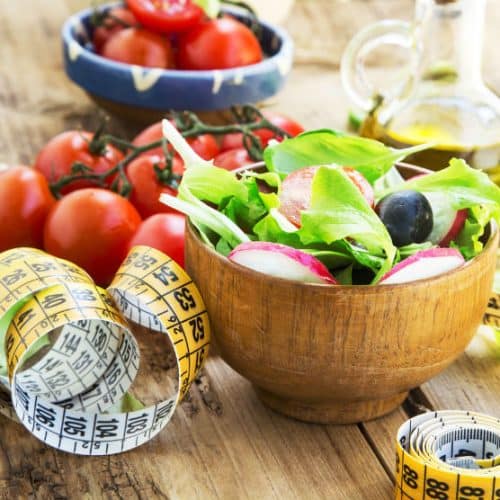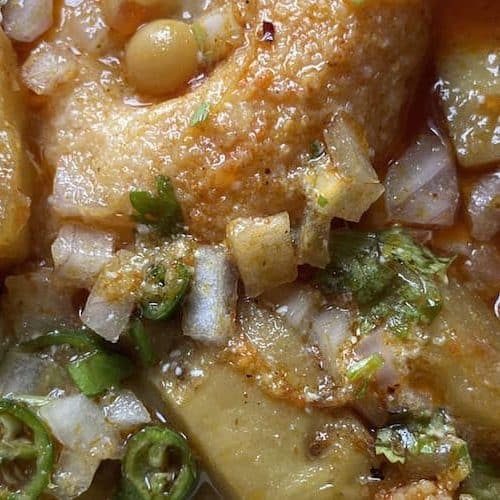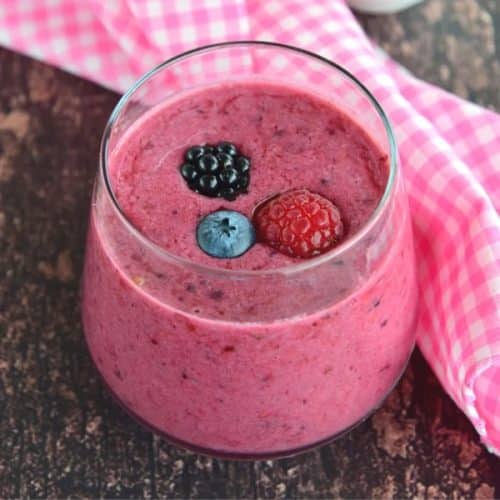In a world of ever-evolving diets, veganism is among the most ‘au courant’ lifestyles. But what precisely does it mean to be vegan? For many, this answer may seem opaque at best; what exactly is vegan food? This article seeks to demystify this dietary preference and explore its benefits for humans and animals.
Veganism is an ethical lifestyle that abstains from consuming animal products such as meat and dairy. While some people who identify as vegans are motivated by health reasons, others adopt this diet out of concern for animal welfare or environmental issues. Regardless of why someone chooses to go vegan, though, there can be no doubt that doing so has countless positive impacts on our planet’s future sustainability.
So how do you get started with following a vegan diet? What types of foods do vegans eat? Read on to learn more about the delicious possibilities available in plant-based cuisine!
Definition Of Veganism
Veganism is a lifestyle choice that involves abstaining from animal products. This includes food, clothing, and other materials derived from animals. Vegans follow this ethic for various reasons such as environmental protection, health benefits, or ethical concerns about animal cruelty. Some may also choose veganism for spiritual reasons, believing it will benefit their body and soul.
Living a vegan lifestyle means avoiding all forms of exploitation or harm to animals. As well as eliminating meat, dairy, eggs, fish and seafood from one’s diet, vegans avoid wearing fur, leather or wool garments and using cosmetics containing beeswax or honey. Many opt not to support companies that test on animals too.
Understanding what vegan entails is essential to make an informed decision before deciding if it’s right for you. With more people becoming aware of the potential benefits of a plant-based diet, there has been increased interest in veganism over recent years. Moving forward, we’ll consider some things when switching to a vegan diet.
What To Know About Vegan Diets
Veganism is a way of life that avoids using all animal products, including eggs and dairy. Becoming vegan means living more ethically by avoiding foods derived from animals. To help people understand what it means to be vegan, there are some key points to consider:
- Vegan food excludes any form of animal consumption or exploitation;
- A vegan diet consists mainly of fruits, vegetables, whole grains, legumes, nuts and seeds;
- Plant-based alternatives can replace much of the animal protein found in non-vegan diets;
- There are many health benefits associated with eating a vegan diet.
Choosing a plant-based lifestyle has its rewards beyond simply being cruelty-free. This diet may reduce the risk of chronic diseases such as diabetes and heart disease. Additionally, because plant-based meals tend to be naturally low in fat and rich in fibre, they can also contribute to weight loss when combined with physical activity. With so many delicious recipes available online today, adapting to a vegan lifestyle can feel like something other than sacrificing flavour or variety. By understanding what it means to eat vegan, you will be well on your way towards achieving optimal health and wellness through an eco-friendly diet. Ahead lies exploration into the potential advantages of eating a plant-based diet.
The Benefits Of Eating A Vegan Diet
Eating a vegan diet provides many health and environmental benefits. Studies have shown that vegans tend to have lower cholesterol, blood pressure, and body mass index levels than non-vegans. This is because plant-based foods are naturally low in saturated fat and contain no cholesterol. Additionally, vegan diets are typically higher in fibre and antioxidants than animal-based diets, which can help reduce the risk for certain chronic diseases such as heart disease and type 2 diabetes.
On top of the physical health benefits, there are also significant environmental advantages to eating a vegan diet. A study by Oxford University found that veganism could reduce an individual’s carbon footprint by up to 73%. This is because raising animals or growing crops specifically for human consumption requires large amounts of land, water, energy, fertilizer, pesticides, and other resources. Eating fewer animal products reduces our overall impact on the planet while helping preserve natural ecosystems.
Not only do vegans get numerous nutritional benefits from their meals but they’re also able to make ethical choices when it comes to food production. By avoiding meat and dairy products altogether, people can actively support sustainable farming practices and work towards reducing cruelty towards animals used in industrial agriculture systems. With so much positive potential for individuals’ well-being and global sustainability, switching to a plant-based diet seems like an intelligent choice! Moving forward into how one might go about doing this.
How To Go Vegan
It might seem like a difficult task to go vegan, but the truth is that it’s easier than you think. One of the biggest fears of going vegan is needing more nutrients. However, you can meet your nutritional needs by carefully planning and eating various fruits, veggies, grains and legumes. Eating out can be tricky at first, but restaurants increasingly provide vegan options, making it easier than ever to eat plant-based meals outside the home.
Many need help with what foods to eat or where to find when transitioning to a vegan lifestyle. Fortunately, many resources are available online, such as recipe blogs and websites with helpful tips on making simple yet delicious meals without animal products. You don’t need to rely solely on speciality vegan items either; most supermarkets now stock plenty of plant-based alternatives for staples like milk, cheese and meat substitutes.
But if you’re still feeling overwhelmed by all the new information, take things one step at a time – start by replacing some of your favourite dishes with vegan variations until you eventually have an entirely plant-based diet. With these steps in mind, making this transition doesn’t have to be intimidating: it’s possible for anyone who wants to try it! And armed with this knowledge, we can move on to our next section about exploring the different nutrition facts for vegans.
Nutritional Information For Vegans
Veganism is a lifestyle that excludes all animal products, including meat, dairy, and eggs—eating vegan means consuming plant-based foods instead of those derived from animals. It’s important to note that even though vegan diets are generally healthier than other diets, there can still be nutritional deficiencies if the diet needs to be adequately balanced.
Vegans must take special care to ensure enough protein because most sources come from animal products such as meats and dairy. Plant proteins like beans, lentils, nuts and seeds provide essential amino acids for muscle growth and development. Other plant-based alternatives include tofu, tempeh and seitan, which contain high protein levels.
It’s also important for vegans to pay attention to calcium intake since it’s not found naturally in many vegan foods. Vegan sources of calcium include fortified non-dairy milk (almond, soy or coconut), leafy greens such as kale and bok choy, blackstrap molasses, legumes and almonds. Iron can sometimes be an issue for vegans, too, so good sources include:
- Whole grains like quinoa and oats.
- Dark green vegetables such as spinach.
- Dried fruit such as apricots.
- Legumes like chickpeas.
- Nuts & seeds such as cashews and pumpkin seeds.
- Tahini paste and miso paste.
By eating a variety of healthy vegan foods each day, you’ll have no problem getting all your essential nutrients while avoiding animal products altogether. In the next section, we will explore different plant-based diets available today.
Different Types Of Plant-Based Diets
It’s estimated that 6% of the population in the United States follows a vegan diet. This percentage is multiplying as more people want to reap the health benefits of plant-based eating. So what does it mean to be vegan? Let’s look at some of the different types of plant-based diets and explore which foods healthy vegans eat.
| Diet | Description |
| Vegan | Refers to not consuming animal products or byproducts such as eggs, dairy, honey, etc. |
| Plant-Based | Emphasizes whole food consumption while avoiding processed items; may include small amounts of animal products such as fish or eggs but focuses mainly on plants. |
| Flexitarian/Semi-Vegetarian | Primarily vegetarian with occasional meat intake (ideally sustainably sourced). It can also refer to someone who consumes largely vegetarian meals with rare non-vegetarian options. |
| Vegetarian/Lacto-Ovo Vegetarianism | Does not consume any kind of meat, including poultry and seafood but will consume dairy and egg products derived from animals. |
Each plant-based diet has its own set of guidelines for what you can and cannot eat, emphasizing an increase in vegetable intake over other food sources like animal proteins or processed food items. Eating this way provides many health benefits, such as reducing your risk for heart disease, diabetes, obesity and cancer due to its nutrient-dense nature compared to standard Western diets heavy in red meats and refined sugars. Additionally, following a plant-based lifestyle generally leads to reduced environmental impacts due to less reliance on animal agriculture methods, which require large amounts of water and land resources for feed production, among other issues related to factory farming practices.
Plant-based diets are becoming increasingly popular with individuals seeking improved health outcomes and those wanting to reduce their environmental footprint without compromising deliciousness! With so much variety available when it comes to creating flavorful dishes using only plants, there really isn’t anything stopping anyone from trying one type – whether they’re just starting out or have been experimenting with various forms for years now! From simple vegan recipes featuring beans and grains to complex flavour combinations involving nuts and spices – one thing is sure: There’s something out there for everyone! As we move onto our next section about ‘foods healthy vegans eat’, let us explore some tasty ideas that fit within each category listed above.
Foods Healthy Vegans Eat
Vegan food is plant-based, meaning it does not contain any animal products. This includes meat, fish, dairy and eggs. There are a variety of foods that vegans can enjoy as part of their diet:
- Fruits and vegetables
- Whole grains such as oats, quinoa, pasta and bread
- Legumes such as beans, lentils and chickpeas
- Nuts and seeds
- Plant-based milk alternatives such as almond or soy milk.
In addition to these staples, vegan diets include processed vegan substitutes for traditional animal products like cheese, yoghurt and ice cream. These items provide essential nutrients while allowing vegans to indulge in the flavours they love. Eating a balanced vegan diet will give individuals plenty of vitamins and minerals without sacrificing taste. With so many options available, creating meals that fuel your body has never been more accessible!
Now that you’ve better understood what healthy vegan eating looks like, let’s explore some tips for dining out on a vegan diet.
Tips For Dining Out On A Vegan Diet
Dining out as a vegan can be daunting, but with the proper knowledge and tips it doesn’t have to be. After all, who wouldn’t want to enjoy delicious vegan food without ever having to leave home? Here are some tips for dining out on a vegan diet that you should keep in mind:
First of all, do your research ahead of time. Look up menus online or call restaurants beforehand to ask if they offer vegan options. This will save you the trouble of being disappointed when you arrive at the restaurant only to find out there’s nothing suitable for vegans. Additionally, don’t be afraid to ask questions! Ask waitstaff what ingredients are used in each dish so you know exactly what is safe to eat.
Second, think outside the box—you don’t have to stick strictly to salads and sides while eating out as a vegan. Many restaurants now offer creative plant-based dishes like tacos with jackfruit filling or burgers made from lentils or mushrooms; these alternatives may even surprise non-vegan diners too! With some experimentation, you might discover your new favourite meal when dining out as a vegan.
Finally, take advantage of ‘accidentally vegan’ items such as French fries, chips, and salsa (just make sure they aren’t cooked in animal fat). Also, consider adding sauces or condiments like guacamole which can instantly transform an ordinary side into something more exciting and flavorful. Eating out as a vegan doesn’t mean sacrificing flavour; instead, use this opportunity to get creative and explore different cuisines and recipes! With these tips in mind, shopping and cooking on a budget as a vegan shouldn’t feel overwhelming anymore.
Shopping And Cooking On A Budget As A Vegan
Shopping and cooking on a budget as a vegan don’t have to be complicated. You need to know what staples to buy in bulk, how to use leftovers creatively, and where the best deals are. Bulk items like beans, grains, nuts, flour and products can all be purchased cheaply in large quantities from wholesale stores or online retailers. Doing this will save money while stocking your pantry with healthy plant-based ingredients that will last for weeks or even months.
Leftover vegetables make excellent additions to soups or stir fries, including bulk items like rice and lentils. Eating vegetarian meals more often means you don’t always have to shop for meat each week. Plus it’s an easy way to cut food costs without sacrificing nutrition or flavour.
Finally, it pays off to do research beforehand. Hence, you know exactly where the best deals are – whether at farmer’s markets, local health food stores, or big box grocery outlets. Doing so helps you stick to a tight budget and lets you take advantage of seasonal fruits and veggies when they’re most affordable and abundant! As we move into the next section about the benefits of going vegan and how to get started, keep these tips in mind when shopping for groceries as a vegan.
Benefits Of Going Vegan And How To Get Started
Transitioning from the previous section about shopping and cooking on a budget as a vegan, let’s explore the benefits of going vegan and how to get started. For example, Emily was concerned about her health and wanted to transition into a vegan lifestyle without breaking the bank. After researching what it meant to be vegan, she found many advantages, such as improved physical health and environmental sustainability.
Emily first did find out more about nutrition and which foods fit within a vegan diet. She learned that proteins could come from plant sources like legumes, nuts, tofu, seitan, tempeh, grains and beans; dairy products will be replaced by nut milk, soy yoghurt or coconut cream; fruits and vegetables are abundant in vitamins, minerals, antioxidants with delicious flavours; while snacks include hummus or almond butter sandwiches.
Emily also discovered some great tips on making tasty meals at home with simple ingredients, such as adding spices and herbs for flavour rather than relying heavily on processed food items. To help stick to her new diet plan, she created weekly meal plans to save time instead of constantly figuring out what’s next on the menu. With these changes, Emily felt physically and mentally healthier due to an increase in energy levels after only two weeks of transitioning into this lifestyle.
With all this information, Emily was ready to tackle her new eating method head-on. Still, she needed more knowledge about specific types of vegan foods available for her convenience. In our next section, we’ll have a comprehensive breakdown of the different kinds of vegan foods, so stay tuned!
A Comprehensive Breakdown Of The Different Types Of Vegan Foods
Vegan food is a type of cuisine made without any animal products. This includes avoiding dairy, eggs, honey, and other animal-derived ingredients like gelatin or lard. Veganism also excludes the consumption of meat and fish. It’s important to note that vegan foods don’t necessarily have to be plant-based; plenty of vegan meals can include grains, legumes, fruits, nuts, and vegetables.
When it comes to vegan staples, there are many options to choose from. Grains such as oats, quinoa, rice, and wheat provide an excellent source of carbohydrates while lentils and beans offer protein and fibre. Nuts are also a perfect option for plant-based proteins – almonds contain healthy fats and essential vitamins. Fruits and vegetables should not be overlooked either – they provide vital nutrients ranging from vitamin A to zinc!
Countless online recipes take advantage of these critical ingredients; some may even surprise you with how delicious they taste! The range of meal possibilities is vast:
- Breakfast burritos stuffed with black beans & sweet potatoes.
- Curries loaded with cauliflower & spinach, hearty soups featuring mushrooms & kale.
- The list goes on.
Experimenting with different flavours will help determine what works best for your taste buds! With these basics covered, we can explore what is considered vegan food further.
Exploring What Is Considered Vegan Food
Veganism is a lifestyle choice that has gained traction in recent years. It avoids animal products and byproducts, such as meat, dairy, eggs, honey, fur, leather, and wool. As veganism grows in popularity, it’s essential to understand what can be included in a vegan diet.
A vegan diet includes plant-based proteins like lentils and beans, grains such as quinoa or wild rice, and fruits and vegetables of all colours and types. Vegans also incorporate nuts and seeds into their diets for good fats and protein sources. Leafy greens are an excellent source of vitamins and minerals for optimal health. At the same time, legumes provide fibre which helps keep the digestive system running smoothly. Some vegans may even include vegan alternatives such as tofu or tempeh.
Overall, eating a balanced vegan diet provides essential nutrients without compromising one’s ethical standards associated with food production. This means that when shopping for food items labelled “vegan”, you should always check the ingredients list to ensure no animal products were used in its preparation or processing. With this knowledge in hand, we can now transition to exploring the difference between vegans and vegetarians!
The Difference Between Vegans And Vegetarians
Veganism and vegetarianism seem similar, but they’re different. When picturing the two lifestyles, imagine a river flowing through a lush green meadow. On one side of the bank flows an animal-free diet – this is what vegans strive for. The other side contains veggies, fruits, grains, and legumes while avoiding meat or seafood – that’s what vegetarians are all about.
The differences between these diets don’t end there, however. Vegans go above and beyond to ensure their lifestyle excludes anything from animals, such as eggs, honey and even leather products like shoes and bags. Vegetarians aren’t necessarily against using animal-derived items; it simply doesn’t factor into their diet choices.
These dietary distinctions can be confusing at first glance, but with practice comes understanding. Now that we’ve explored the differences between these two lifestyles let’s examine plant-based sources of iron.
Plant-Based Sources Of Iron
Fortunately, there are plenty of plant-based sources of iron that vegans can incorporate into their diets. The most common way to get enough daily iron is through legumes, nuts and seeds. Legumes such as lentils, soybeans and black beans provide a good source of dietary iron. Nuts like almonds, cashews and pine nuts are also rich in iron. At the same time, pumpkin and squash seeds offer an additional mineral boost.
Whole grains such as quinoa and oatmeal contain moderate amounts of iron, which can contribute to the recommended daily intake. Furthermore, dark leafy greens, including spinach, kale and swiss chard, are excellent vegan sources of iron. To increase absorption rates, it’s best to combine these foods with vitamin C-rich ingredients like tomatoes or bell peppers.
Lastly, fortified foods, including cereal products, non-dairy milk alternatives, and nutritional yeast, all contain substantial amounts of added minerals for those who need more than what whole foods alone can provide. Moving forward from this section about plant-based sources of iron, we will explore the health benefits of eating a vegan diet.
Health Benefits Associated With Eating A Vegan Diet
Eating a vegan diet is like a breath of fresh air for your body. It’s packed with essential vitamins and minerals that can provide numerous health benefits, including improved digestion and weight loss.
A plant-based diet low in saturated fat provides fibre-rich fruits, vegetables, legumes, nuts and seeds to help reduce the risk of heart disease and other serious illnesses. Additionally, some research suggests that vegans are at a lower risk for developing certain types of cancer. Eating more plants may also lead to higher energy levels due to their high nutritional value compared to animal products.
Vegan diets are an excellent way to get essential nutrients without added sugar or unhealthy fats in processed foods. They are also environmentally friendly since they don’t require large amounts of land or water resources like animal agriculture. With its many advantages, it’s no wonder many people worldwide have embraced veganism as part of their lifestyle.
Frequently Asked Questions
What Happens If I Accidentally Eat Something Non-Vegan?
One of the biggest concerns for vegans is accidentally eating something that isn’t vegan. Many food products contain animal derivatives without being labelled, making it difficult to tell what’s safe and what’s not. Additionally, cross-contamination can quickly occur in restaurants or other places where non-vegan items are served alongside vegan dishes. This raises a fundamental question: What happens if you eat something non-vegan by accident?
The answer depends mainly on your situation and values as a vegan. For some people, this may be an opportunity to reflect on their commitment to the lifestyle and aim to make better decisions in the future. Others might decide that one slip-up doesn’t mean they’ve failed at living a vegan life and continue their day without feeling guilty. Ultimately, every vegan will respond differently when faced with this dilemma.
No matter how you choose to respond, though, it’s important to remember that accidental consumption of non-vegan foods does not invalidate you as a person or take away from all the excellent work you do every day towards helping animals and protecting our planet. Everyone makes mistakes sometimes; we need to learn from them and move forward with more knowledge than before.
Is Vegan Food More Expensive Than Non-Vegan Food?
Many people wonder if vegan food is more expensive than non-vegan food. It’s a valid question, especially for those trying to decide whether or not they should switch to veganism and what kind of impact it will have on their budget. The answer depends mainly on where you buy your food and how much effort you put into finding bargains.
Grocery stores often carry both vegan and non-vegan products. Still, some may be more expensive than others depending on the store. For example, Whole Foods can be pricier than other grocery stores due to its focus on organic produce. However, plenty of affordable vegan options are available at most grocery stores that don’t break the bank. Additionally, buying in bulk can reduce costs significantly while enabling individuals to eat healthily.
There are many cost-effective ways to incorporate vegan food into one’s diet without breaking the bank – such as shopping at farmers’ markets or joining Community Supported Agriculture (CSA) programs which provide members with fresh local produce for an annual fee. Ultimately, following a healthy and balanced plant-based lifestyle does not need to equate to spending more money than eating animal products; in fact, going meat-free has been repeatedly shown to save money overall in the long run!
Are There Vegan-Friendly Restaurants In My Area?
Finding a vegan-friendly restaurant in your area is becoming easier and more accessible. Businesses have caught on to the trend of providing plant-based alternatives and more options for those who follow a vegan lifestyle. In this article, we’ll look at how to find out if there are vegan restaurants near you.
One way to start searching for vegan eateries nearby is by simply doing an internet search or using social media platforms such as Instagram or Facebook. Many restaurants now advertise their vegan menu items online, making it easy to check before leaving home. You can also look up reviews from other customers that share their experiences with these establishments.
Another option is asking around locally; chances are someone will know of (or be able to point you towards) a good spot for vegans in town. Word-of-mouth recommendations often prove extremely helpful when looking for places that cater specifically to dietary preferences, like being vegan.
Finding the right place through online research or local tips should be relatively simple once you start digging into what your community offers!
Are There Any Vegan Snacks I Can Easily Find In The Grocery Store?
If you’re looking to find vegan snacks that are quick and easy to get, the grocery store is a great place to start. With an ever-increasing selection of delicious plant-based products, satisfying your snack cravings is more accessible without compromising taste or nutrition. There’s something for everyone in the supermarket aisle, from protein bars and chips made from nuts and legumes to crackers and cookies free from animal byproducts.
Many brands have started producing vegan versions of their classic snacks as well. Whether you’re craving pretzels or ice cream sandwiches, chances are you can find them with a vegan twist. There are also plenty of companies that specialize exclusively in offering up tasty treats that don’t contain any animal ingredients whatsoever. You need to look out for labels like ‘certified vegan’ when shopping around to be sure what you’re buying is 100% cruelty-free!
The next time those mid-afternoon munchies hit, why not try one of these vegan options? Not only will they help keep your energy levels up and provide essential nutrients, but they’ll also contribute positively towards reducing animal suffering – win/win! So go ahead and grab yourself a few guilt-free goodies; your body (and conscience) will thank you for it later!
Are There Any Health Risks Associated With Eating Vegan?
Eating vegan can be a healthy option, but as with any diet, there may be potential health risks. It’s important to understand the nutritional needs of a vegan lifestyle and how they differ from other diets. This article will discuss some of the possible risks associated with eating vegan.
One potential risk is that vegans may only get enough essential vitamins and minerals, such as vitamin B12 or iron if their diet is carefully planned. Vegans should supplement these nutrients through fortified foods or supplements to avoid deficiencies. Another potential risk is that many plant-based proteins must be completed. They don’t contain all nine essential amino acids our bodies need for growth, repair and energy production. To ensure you’re getting adequate nutrition, it’s best to combine different types of plant-based proteins throughout the day, so your body can access all nine essential amino acids at once.
Finally, another concern regarding vegan eating is meeting daily calorie requirements without missing out on vital nutrients. Without proper planning, it can be easy to overlook nutrient-dense sources of calories like nuts and seeds, which provide beneficial fats, protein, and fibre needed for optimal health. If a person does not plan meals, it could lead to an unbalanced diet, affecting overall health in the long run.
Therefore, understanding what goes into a properly balanced vegan diet is vital for ensuring optimal nutrition and avoiding associated health risks. With careful planning and supplementation where necessary, anyone considering switching to a vegan lifestyle can reap the benefits while maintaining good health.
Conclusion
The vegan lifestyle is often seen as restrictive, but it doesn’t have to be. With so many delicious plant-based options available, many ways exist to enjoy a healthy and varied diet without worrying about accidentally consuming animal products. From vegan restaurants and snacks to ethical shopping habits, being vegan can open up an exciting world of culinary exploration – even if you don’t always get it right!
At the same time, some health risks may be associated with a vegan diet that requires consideration. It’s essential to consider your needs when making dietary choices, whether you’re transitioning from non-vegan or just starting out. After all, what’s the point of becoming vegan if I compromise my well-being?
So while adopting a vegan lifestyle has its challenges, it also offers tremendous rewards for those willing to make an effort. Eating consciously creates a more sustainable future for our planet; it allows us to explore new flavours and discover how good eating ethically can taste!

